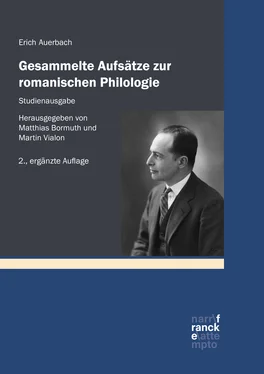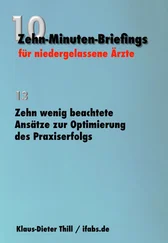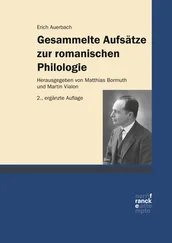e un di loro, quasi dal ciel messo
‘Veni sponsa de Libano’ cantando
gridò tre volte, e tutti li altri appresso.
Quali i beati al novissimo bando
surgeran presti ognun di sua caverna,
la revestita carne alleluiando,
cotali in su la divina basterna
si levar cento, ad vocem tanti senis,
ministri e messaggier di vita eterna.
Tutti dicean: ‘Benedictus qui venis!’,
e fior gittando di sopra e dintorno,
‘Manibus o date lilia plenis!’
Io vidi già nel cominciar del giorno
la parte oriental tutta rosata
e l’altro ciel di bel sereno adorno;
e la faccia del sol nascere ombrata,
si che per temperanza di vapori
l’occhio la sostenea lunga fiata:
così dentro una nuvola di fiori
che da le mani angeliche saliva
e ricadeva in giù dentro e di fòri
sovra candido vel cinta d’uliva
donna m’apparve. …
Almost without exception – and of course correctly – the commentators have recognized the ‘senior’ who shouts as Solomon, that is, as a symbol of the Canticles; he shouts three times, just as in the text (Cant. 4, 8) it is three times repeated: Veni de Libano sponsa mea, veni de Libano, veni, coronaberis … The shout itself has been understood, so far as I can see, by all modern interpreters as an invitation to Beatrice to appear; their argument is as follows: since DanteDante interprets the beloved of the Canticles in his Convivio II, 14, in the often quoted passage concerning the hierarchy of the sciences, as the scienza divina scienza divina 15 and since Beatrice is, once for all, scienza divina – the invitation is addressed to her.
The ancient commentators were more cautious, Benvenuto da ImolaBenvenuto da Imola writes:16
… et primo quidem introducit unum senem cantantem laudes ipsius ecclesiae. Et ad intelligentiam litterae debes scire, quod hic erat Salomon qui inter alios fecit librum qui intitulatur Canticum Canticorum, in quo sub typo describit statura ecclesiae introducens sponsum et sponsam, id est Christum et ecclesiam, ad loquendum mutuo. … Ista verba scripta in praedicto libro Canticorum sunt verba sponsi, id est Christi, qui dicit ad sponsam idest ecclesiam: Veni sponsa mea odorifera. Libanum enim est mons Arabiae, ubi nascitur thus quod etiam dicitur olibanum, sicut patet per Bernardum, qui pulcre scripsit super istum librum …
This passage is a precious testimony for two reasons: Bernard of ClairvauxBernhard v. Clairvaux, whom it mentions, had a deep, lasting and widespread influence, particularly through his cycle of Sermons on the Canticles; above all, it shows the spontaneous reaction of every mediaeval Christian to the words sponsus and sponsa : they meant for him Christ and the Church; for the Church you may sometimes put Christianity or every faithful soul.17 These meanings had become current and familiar from thousands of sermons, from liturgical and ‘semiliturgical’ representations. In view of the great liberty of interpretation which I have already mentioned, it was certainly possible occasionally to use one of these words in another sense; but then it was indispensable to say so explicitly, as DanteDante did in the above quoted passage of the Convivio. Otherwise the words sponsus and sponsa were just as fixed as the words President and Congress are now in the United States. In the same way it would have seemed very strange and astonishing to the mediaeval reader to see the verses veni sponsa de Libano and benedictus qui venis applied to the same person. He knew, on the contrary, from many sermons and from the liturgy, that the first refers to the Church, or Christianity, or the faithful soul, the other to the Saviour. Therefore it is, if not impossible, at least very unlikely, that DanteDante intended the words veni sponsa de Libano as an invitation to Beatrice.
The whole scene is unmistakably composed as a figure of the appearance of Christ.18 First comes the magnificent comparison with the resurrection of the flesh in the last judgement where Christ is to appear as judge of the world; then the hundred19 sing ad vocem tanti senis (who has thus compelled them to arise) the words of the crowd at Christ’s Entrance into Jerusalem (MatthMatthäus (Evangelist). 21, 9, etc.): benedictus qui venis in nomine domini ; every mediaeval theologian and most of the laymen knew, and felt immediately, on hearing these words, that the Entrance into Jerusalem figures the appearance or the reappearance of the Saviour when the eternal day begins, and when the earthly Jerusalem becomes definitely the eternal and true one. Concerning the flowers, I begin by quoting some sentences from Bernard’s sermons on the Canticles: he says, explaining 2, 12 ( flores apparuerunt in terra nostra, tempus putationis adventi ):
Quaeris quando hoc fuit? quando putas, nisi cum refloruit caro Christi in resurrectione? Et hic primus et maximus flos qui apparuit in terra nostra. Nam primitiae dormientium Christus (1 Cor. 15 , 20). Ipse, inquam, flos campi et lilium convallium Jesus (Cant. 2, 1), ut putabatur filius Joseph a Nazareth (Luc.Lukas (Evangelist) 3, 23), quod interpretatur flos. Is ergo flos apparuit primus, non solus. Nam et multa corpora sanctorum, qui dormierant, pariter surrexerunt, qui veluti quidam lucidissimi flores simul apparuerunt in terra nostra. … ( Pate. Lat ., CLXXXIII, 1059–60)
Therefore, flos is caro Christi , and flores ,20 plural, are the arisen bodies of the Saints: the figure of reappearance and ressurection is thus continued by the scattering of flowers; and one may even imagine, if one reads Bernard’s quotation ego sum flos campi et lilium convallium , why DanteDante employed the beautiful verse from VergilVergil ( Aen . VI, 882), so welcome for the rhyme. It has presumably not much to do, as DanteDante here uses it, with the death of MarcellusMarcellus;21 it is an allusion to the symbolical meaning of the lily, arising from certain passages of Scripture. The speculation about the lily is very rich and multifarious ( spiritualis haec tam pulchra varietas, says Bernard on another occasion); I can give only a rough and inadequate indication by saying that it figures on the one hand Christ, on the other the souls of the righteous or their virtues; to Christ refers Cant. 2, 1, ego flos campi et lilium convallium, often combined with Gen. 27, 27, ecce odor filii mei sicut odor agri pleni cui benedixit dominus ; to the righteous Cant. 2, 16–17, Dilectus meus mihi, et ego illi, qui pascitur inter lilia, donec aspiret dies et inclinentur umbrae (these words refer to the Last Day), combined with other passages, especially with the liturgical paraphrase of Hosea, 14, 6, Iustus germinabit sicut lilium et florebit in aeternum ante Dominum .22 I give in the note23 some extracts from texts, where the figurative themes ‘arrival of Christ’, ‘resurrection’ and ‘Last Day’ are indicated – without however limiting myself strictly to these themes. For lilia as the souls of the Saints or the righteous one may also quote DanteDante himself, Par. 23, 74–75:
… quivi son li gigli
al cui odor si prese il buon cammino.
With the flower- or lily-figure DanteDante combined another, well known in the tradition: that of the cloud tempering the splendor of the appearing sun, so that a human eye may endure it.24 Bernard writes about this cloud in his first sermon De adventu Domini , § 8 ( Patr. Lat ., CLXXXIII 39):
Attamen velim nosse, quid sibi voluerit, quod ad nos venit ille, aut quare non magis ivimus nos ad illum. Nostra enim erat necessitas: sed nec est consuetudo divitum ut ad pauperes veniant, nec si praestare voluerint. Ita est, fratres, nos magis ad ilium venire dignum fuit; sed duplex erat impedimentum. Nam et caligabant oculi nostri: ille vero lucem habitat inaccessibilem (1 Tim. 6, 16); et jacentes paralytici in grabato divinam illam non poteramus attingere celsitudinem. Propterea benignissimus Salvator et medicus animarum descendit ab altitudine sua, et claritatem suam infirmis oculis temperavit. Induit se laterna quadam, illo utique glorioso et ab omni labe purissimo corpore quod suscepit. Haec est enim illa levissima plane et praefulgida nubes, supra quam ascensurum eum propheta praedixerat, ut descenderet in Aegyptum (Is. 19, 1).
Читать дальше












